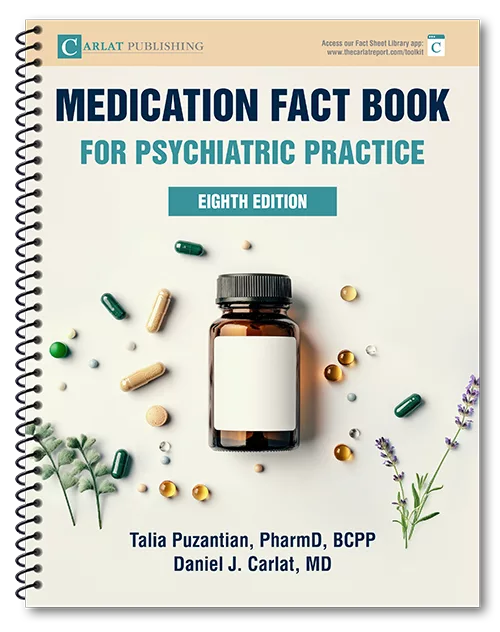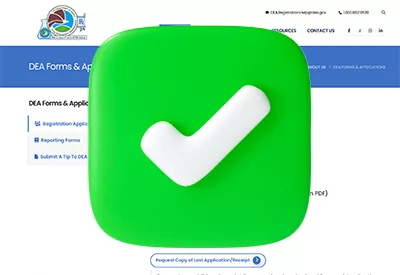De-Escalation and Reducing Violence in Psychiatric Care

Dr. Scott Zeller is Vice President for Psychiatry, Vituity; Assistant Clinical Professor of Psychiatry, University of California-Riverside School of Medicine, Riverside, CA.
Dr. Zeller has no financial relationships with companies related to this material.
CHPR: Dr. Zeller, please start by telling us a little about yourself.
Dr. Zeller: I’ve worked in emergency psychiatry for nearly 38 years. For over 20 of those years, I led psychiatric emergency services in Alameda County, California, which includes Oakland and Berkeley. These days, I help emergency departments (EDs) across the US and internationally improve their approach to behavioral emergency patients. A big part of my work has been helping hospitals develop EmPATH units—that’s short for Emergency Psychiatric Assessment, Treatment, and Healing units. These units provide a calm, therapeutic environment for patients, which greatly reduces agitation and aggressive behavior. What’s impressive about these units is how they change outcomes. While physical restraints are used in about 15%–20% of behavioral emergency cases in regular EDs, they’re used in only 1 or 2 out of every 1,000 cases in an EmPATH unit (www.tinyurl.com/ymts5kkf; Simpson SA et al, Gen Hosp Psychiatry 2014;36:113–118). That’s because the focus is on early de-escalation—training staff to notice subtle signs of agitation and intervene before things escalate. (Editor’s note: See our interview with Dr. Nordstrom in CHPR Jul/Aug/Sep 2022 for more on EmPATH units.)
CHPR: Outside of EmPATH units, how widespread is violence in psychiatric settings?
Dr. Zeller: It’s a huge issue. You see warnings and signs posted everywhere now saying violence won’t be tolerated in health care settings. Hospitals and lawmakers are working to increase penalties for assaults against health care workers. Everyone working in behavioral health probably knows someone who has been seriously injured on the job. I’ve had my share of incidents—once, a patient hit me over the head with a chair. The patient was upset with another doctor but took it out on me because I happened to be close by writing a note at the nursing station. We switched to heavier chairs after that! Unfortunately, nearly everyone who’s worked in behavioral health has been threatened or physically assaulted at some point. And the problem isn’t getting better; it’s actually getting worse (www.tinyurl.com/2w5t9abn).
CHPR: What do you think of the violence prevention programs that many hospitals offer?
Dr. Zeller: I think they’re heading in the right direction, but many are run by security-focused companies, so these staff aren’t functioning as caregivers. Their mindset is more along the lines of being the last line of defense and relying heavily on force and control. Their strategies tend to emphasize being prepared to physically intervene rather than preventing escalation in the first place. In contrast, our findings from Project BETA have shown that we can avoid using this approach by engaging with patients, creating a therapeutic alliance, making patients feel safe, and helping them understand that our goal is to help them, not to hurt them.
CHPR: Please tell us more about Project BETA.
Dr. Zeller: About 12 years ago, I led an 18-month multicenter project that became known as Project BETA—Best practices in the Evaluation and Treatment of Agitation. This expert panel focused on de-escalation so that everyone in a situation can walk away calm, with no aggression or violence. I remember violence prevention trainings from 15 years ago told attendees to wear sweatpants because the trainings were mostly going to involve self-defense tumbling exercises on mats. Project BETA highlighted that verbal de-escalation is essential in violence prevention, and that it’s not just a technique but a mindset—one that prioritizes listening, empathy, and engagement over force. Project BETA helped create more patient-centric approaches to agitation management to help staff avoid getting into situations requiring self-defense in the first place (Holloman GH Jr and Zeller SL, West J Emerg Med 2012;13(1):1–2).
CHPR: What are the most important patient-centric components of violence prevention programs?
Dr. Zeller: The best programs focus heavily on de-escalation rather than force or self-defense. They teach how to recognize signs of agitation early—like pacing, raised voices, or subtle behaviors such as sarcasm or overly defensive answers—and to intervene before things get out of hand. For example, if a patient is pacing and muttering to themselves while clenching their fists, it’s a sign they’re struggling to keep their frustration under control. An alert and trained staff member might approach calmly, ask if there’s anything that can be done to make them more comfortable, and really listen to the patient’s concerns. Small gestures, like acknowledging that the patient might be having a difficult time and offering a quiet space to talk, can make a big difference in de-escalating that tension. De-escalation isn’t a checkbox; it should guide every interaction with a patient who is showing signs of distress. Too often, patients experience interactions that feel like, “Sit down and shut up.” The interaction might be more polite than that, but patients will often perceive it in that hostile tone. Many patients just need someone to acknowledge their pain or fears—whether they’re feeling anxious, paranoid, or overwhelmed. Active listening plays a critical role in these moments. When we miss that opportunity, situations can escalate quickly.
CHPR: Are there specific training resources that help staff learn effective de-escalation techniques?
Dr. Zeller: Yes, and with the right training, staff can often resolve conflicts early, preventing the need for restraints or medications and building trust with patients even in challenging circumstances. Programs like the Crisis Prevention Institute’s Nonviolent Crisis Intervention® training (www.tinyurl.com/2a7ebkej) and the Joint Commission’s guidelines on de-escalation in health care (www.tinyurl.com/yc247629) emphasize creating rapport and actively listening to understand patients’ immediate needs. These resources guide staff in using straightforward techniques, like mirroring a patient’s tone and maintaining open body language, that can help establish a foundation of trust even before any verbal interaction.
CHPR: How effective are the trainings in de-escalation techniques?
Dr. Zeller: From my experience, they’re highly effective—but only when hospitals treat them as an ongoing commitment, not a one-time training. De-escalation training should happen at least annually, with hands-on role-playing exercises that allow staff to practice and refine their skills. Unfortunately, I still hear far too many stories about patients being put in restraints and heavily sedated, to the point where they don’t wake up for hours. That approach doesn’t help anyone and ties up valuable ED beds that could be used for other patients. It’s simply not a good strategy. Whenever we’ve taught de-escalation practices in EDs, we’ve seen the use of restraints drop, along with the need for injected medications and the number of staff injuries. The goal when treating somebody with agitation isn’t to knock them out, but to help them regain control and be calm.
CHPR: You mentioned that Project BETA outlined principles of verbal de-escalation. Could you review these for us?
Dr. Zeller: Sure. They are: 1) respect personal space; 2) do not be provocative; 3) establish verbal contact; 4) be concise; 5) identify wants and feelings; 6) listen closely to what the patient is saying; 7) agree or agree to disagree; 8) lay down the law and set clear limits; 9) offer choices and optimism; and finally, 10) debrief with both the patient and staff afterward. To give a bit more context, respecting personal space, for example, can mean giving a visibly agitated patient some physical distance rather than crowding them. This can prevent them from feeling cornered or threatened, which might otherwise escalate the situation. Another principle, being concise, encourages staff to avoid complex instructions or explanations when a patient is distressed; simple, clear statements can be more effective in ensuring understanding without overwhelming them. Similarly, offering choices can be as simple as asking, “Would you like to sit here or over there?” Even small choices can give the patient a sense of control and lower their frustration or anxiety.
CHPR: From my experience, nurses often request intramuscular shots to quickly resolve escalating situations. When we suggest trying to engage the patient verbally instead, it can sometimes come across as if we’re not supporting the nurses and potentially placing them in danger.
Dr. Zeller: That’s a common experience. But it’s important to remember that about two-thirds of staff injuries during behavioral emergencies happen during takedowns, when staff try to physically restrain patients. While many assume restraints are the safest option, in reality, the safest outcome is when everyone walks away calm. Research consistently shows that reducing restraints improves patient outcomes, and studies like the one from Pennsylvania found no increase in staff injuries despite dramatic reductions in restraint use (Smith GM et al, Psychiatr Serv 2005;56(9):1115–1122). It’s like that old martial arts philosophy: “The fight that you win is the one that you walk away from.”
CHPR: And restraints and injections often aren’t as quick as we might think for managing escalating patients.
Dr. Zeller: Right—by the time you gather staff, prep the medications, and make sure the patient is held down securely, you might be looking at about an hour, collectively, of staff time spent on what was supposed to be the “fastest” intervention. In contrast, spending a few minutes trying to engage the patient verbally is often more effective and allows staff to avoid coercion and escalation, leading to better outcomes for everyone. Plus, needles can be traumatizing for patients. In many cases, oral meds work just as fast. Lorazepam, for example, takes about 30 minutes to kick in whether it’s given as a pill or an injection. So why not offer a pill and a juice cup first?
CHPR: A lot of people, including some in my family, are scared to death of needles!
Dr. Zeller: Exactly. If a patient is dealing with severe paranoia or voices telling them to harm themselves or others, we won’t build trust if the first thing we do is come at them with a needle. I always remind myself that I might be the first mental health professional a patient ever interacts with. If I screw that up, they might think the whole system is against them. But if I engage with empathy and respect, it can change their entire experience with mental health care.
CHPR: You’ve worked with hospitals around the world. Have you noticed differences in how places handle psychiatric emergencies?
Dr. Zeller: Every hospital thinks their patients are the toughest. I’ve heard, “You’ve never seen patients like ours” more times than I can count. I’ve been to hundreds of hospitals around the US and internationally, and I often hear people say that de-escalation won’t work for the patients they encounter because they’re just too dangerous. But in reality, patients are pretty similar everywhere, and almost everyone responds to de-escalation techniques to some extent. The key is to treat every patient as someone who could benefit from kindness and engagement, even the most agitated ones.
CHPR: Are you seeing more of a shift toward de-escalation rather than the old “show of force” approach? De-escalation skills are so important, yet they’re not always emphasized in training.
Dr. Zeller: Yes, definitely. We’re seeing more emphasis on de-escalation across health care, but it still varies a lot across institutions. And it’s not rocket science—these skills are readily teachable. Simple things like listening, offering help, and using short, respectful phrases can make a huge difference. Someday, I hope every health care worker will know how to de-escalate effectively and restraints will be a rare last resort. The more we spread the word about de-escalation, the better outcomes we’ll see for patients and staff alike.
CHPR: Thank you for your time, Dr. Zeller.

Newsletters
Please see our Terms and Conditions, Privacy Policy, Subscription Agreement, Use of Cookies, and Hardware/Software Requirements to view our website.
© 2025 Carlat Publishing, LLC and Affiliates, All Rights Reserved.


_-The-Breakthrough-Antipsychotic-That-Could-Change-Everything.webp?t=1729528747)



